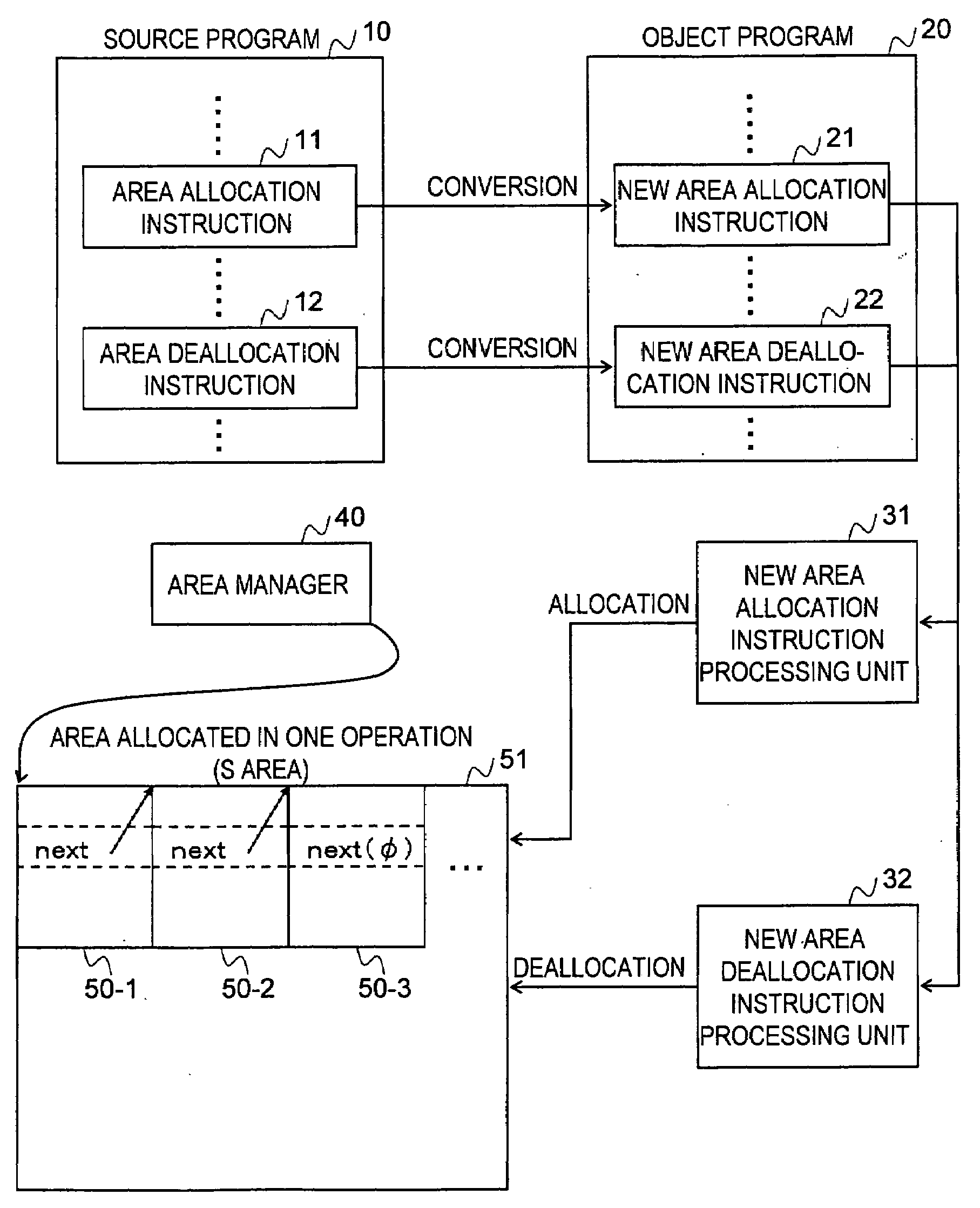Compiling device, list vector area assignment optimization method, and computer-readable recording medium having compiler program recorded thereon
a compiler and list vector technology, applied in computing, instruments, electric digital data processing, etc., can solve the problems of inevitably occurring cache misses, affecting and increasing access time, so as to improve memory fragmentation, reduce the number of cache misses, and improve the execution performance of programs containing list vectors
- Summary
- Abstract
- Description
- Claims
- Application Information
AI Technical Summary
Benefits of technology
Problems solved by technology
Method used
Image
Examples
Embodiment Construction
[0039]An embodiment in which the present invention is applied to a C language compiler will be explained below. The present invention can be applied not only to a C language compiler but also to a compiler for a computer language with which a list of structures can be described.
[0040]FIG. 1 is a diagram for explaining the outline of the present invention. In FIG. 1, reference numeral 10 denotes a source program described in the C language; and 20 denotes an object program as the result of translating the source program 10. In the source program 10, an area allocation instruction 11 is the function “malloc” for allocating a memory area in a C language program. An area deallocation instruction 12 is the function “free” for deallocating a memory area in a C language program. The object program 20 is a program composed of a sequence of machine instructions. However, instructions will be expressed in the same manner as a source program, for the sake of easy understanding of the following...
PUM
 Login to View More
Login to View More Abstract
Description
Claims
Application Information
 Login to View More
Login to View More - R&D
- Intellectual Property
- Life Sciences
- Materials
- Tech Scout
- Unparalleled Data Quality
- Higher Quality Content
- 60% Fewer Hallucinations
Browse by: Latest US Patents, China's latest patents, Technical Efficacy Thesaurus, Application Domain, Technology Topic, Popular Technical Reports.
© 2025 PatSnap. All rights reserved.Legal|Privacy policy|Modern Slavery Act Transparency Statement|Sitemap|About US| Contact US: help@patsnap.com



